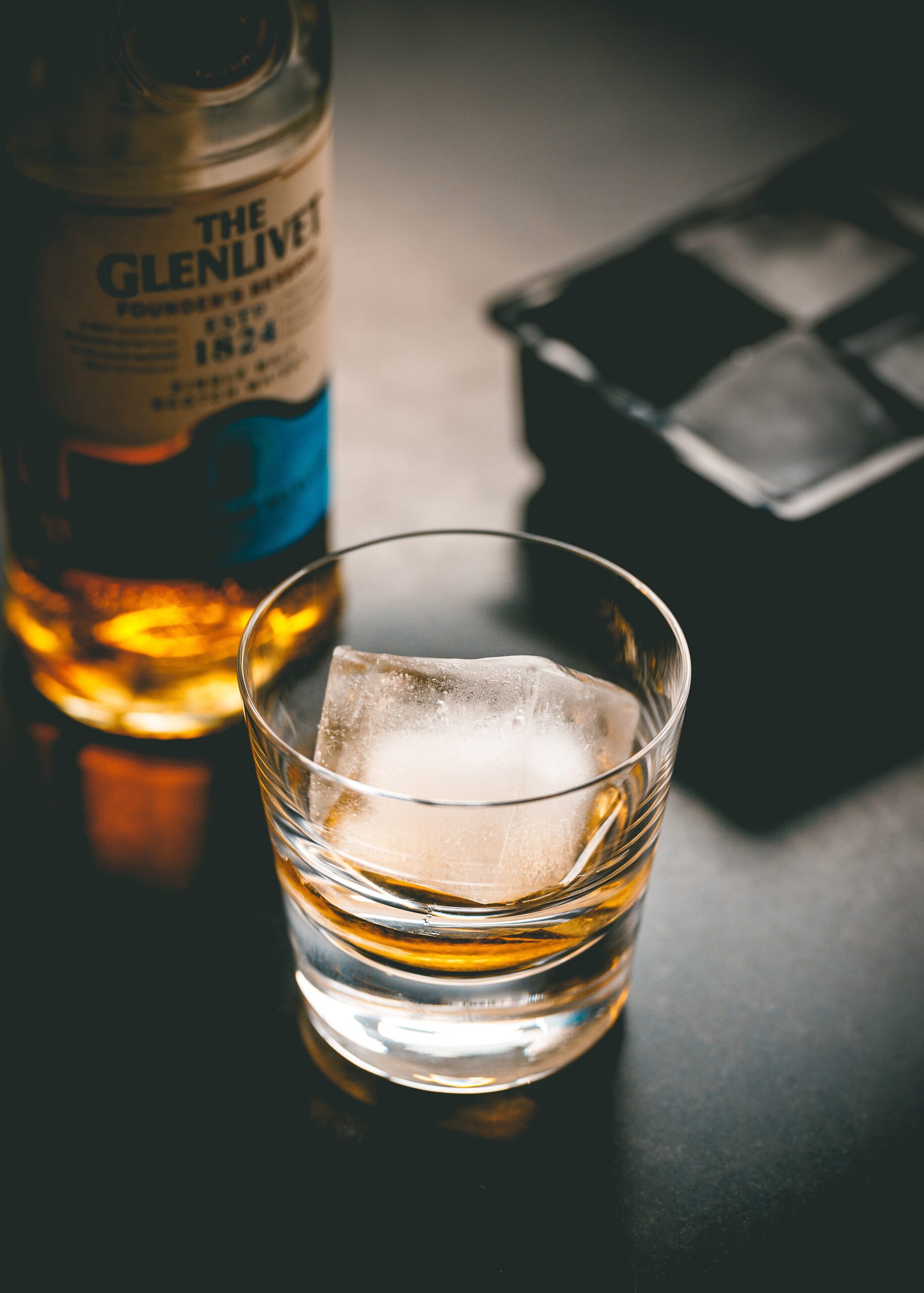‘Should I add water and/or ice to my whisky?’ is a question that gets asked very often, particularly by those beginning their whisky journey.
The addition of water or ice can change whisky in both a positive and negative way. However, it is important to remember that there is actually no right or wrong answer, despite what you may have read or seen. Ultimately, adding water to whisky comes down to personal taste.
Most whisky has water added
To begin, many people do not realise that most Scotch whisky has some water added already. This process is called ‘cutting’ and is done prior to bottling in order to bring the alcohol level down.
The high ABV strength in the cask – this is often between 50-60% ABV – is reduced to a more acceptable drinking strength for the majority of consumers. This is normally between 40-46% ABV and the cutting uses local spring water.
Often, you will hear people say that you should never add water. We have heard many a self-professed connoisseur or whisky geek preach that whisky must only be consumed in its natural form so as to get the maximum flavour and show off the original distillery characteristics.
That is their own personal prerogative and choice, but I always point them towards the reality of the previous paragraph.
It is also worth noting that everyone that either produces whisky or creates the products that we drink – the distillers and Master Blenders – always add water when analysing the spirit, be it off the still or whiskies for a blend or single malt.
Most commonly they dilute and analyse at around 20% ABV – this helps to maximise the aromas and flavours. They will often add different amounts of water to see how the spirit performs and then select the optimum bottling strength.
Why add water?
By adding water to whisky that you have poured means that you can open up different, new, and subtle flavours that you previously had not experienced.
This is particularly true when drinking cask strength whiskies or those with higher alcohol levels – this can be up to or over 60% ABV in some cases. With cask strength whisky the alcohol can easily overpower even the most prominent flavours.
By adding water to whisky you are diluting the alcohol on the most basic level. This drops the ABV level and reduces its influence, which gives both the prominent and subtle aromas and flavours a chance to shine.
How much water you add is entirely up to your personal taste – a few drops, a dribble, a dash … it’s your whisky and your choice. I always say to sample a whisky neat first and then you can decide if you will add water, and if so, how much.
Each whisky will be different – some may require none, some a drop or two, and some quite a lot. Any good whisky bar worth its salt will have water available either in jugs or via a countertop tap and will never question you if you use them.
Always add water a little at a time. You can always add more but can never remove it. If you drown your whisky then you will have wasted it.
Here is the science bit: when you are adding water to whisky the temperature will rise slightly. This is virtually undetectable but releases extra aroma and flavour compounds as it happens. You will also notice an immediate effect when water mixes with the whisky – this phenomenon is known as visceral swirling.
When you see this happening is the best time to smell and taste.
Which water to use?
Water is water, right? The simple answer is no – the type of water added to your whisky can make a difference.
Firstly, it should always be still – carbonated or sparkling water will affect the flavour and structure of the whisky. These are both good for a nice refreshing highball-style drink, but not general drinking or analysing.
Tap water is treated with chemicals, especially chlorine and fluorine, and these can alter the flavour depending on where you live. Are you in a hard or soft water area? Spring water is more natural having permeated through rock over hundreds of years, picking up salts and minerals on its journey.
It is best to find the most neutral water you can – this will dilute but not add any flavour to your whisky.
Ice can be nice
Adding ice is slightly different. Rather than enhancing aromas and flavours, as water can in the right situation, it actually inhibits them.
Ice makes the temperature of the whisky drop rapidly, which locks down the aroma and flavour compounds. It will be refreshing to drink but you will not get the full flavour profile. This will only start to open up and reveal its full character once it starts to warm up towards room temperature.
A great way to drink whisky on a warm day or away on holiday, but not if you are going to analyse it.
The important thing about this is not to get too hung up about water and ice. Experiment with different whisky styles and different levels of water to find your perfect amount and combination.
Experiment with tap vs bottled spring water. Everyone will be different, so as mentioned there is really no right or wrong answer. By doing this you will find your own way of drinking your whisky and what works best for you. And enjoy finding out along the way.




